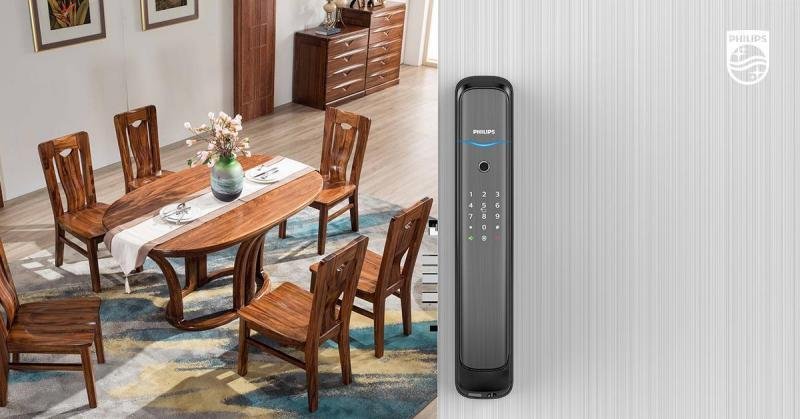Key Takeaways
- Electronic locks improve security by using electric currents to control the locking mechanism. They can be operated through digital methods such as PIN codes, fingerprint scans, or smartphones, offering a convenient and modern alternative to traditional keys.
- There are several types of electronic locks, including keypad locks, biometric locks, and RFID/NFC card locks. Each type offers unique features designed to meet the needs of both homes and businesses.
- While electronic locks may cost more upfront than traditional options, they offer long-term advantages. These include keyless entry, remote access, and smart home integration, making them a smart investment for improved security and convenience.
Definition of Electronic Locks
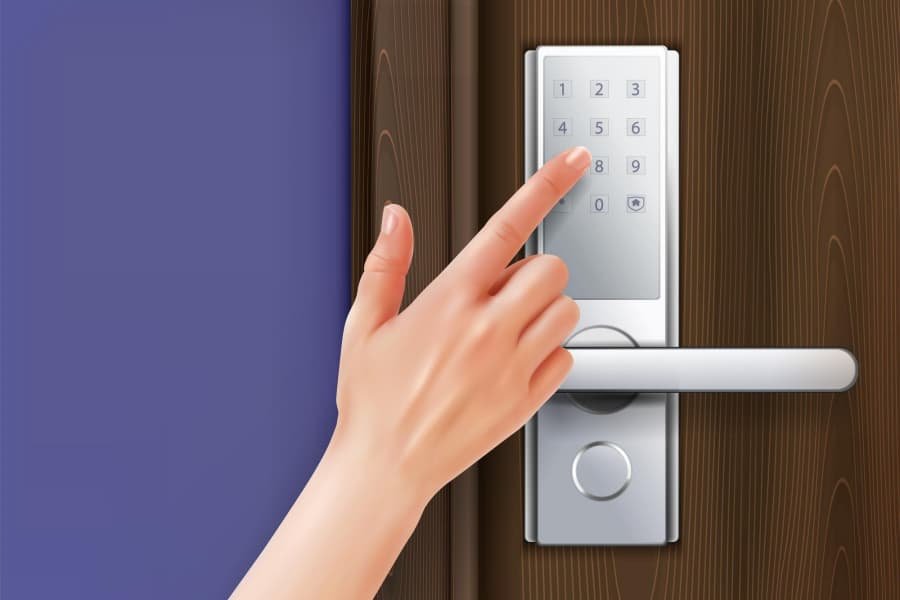
Electronic locks are advanced security devices that use electronic mechanisms to lock and unlock doors, offering a modern alternative to traditional key-based systems. Unlike mechanical locks, which rely on physical keys, electronic locks operate through electric signals triggered by keypads, cards, biometrics, or mobile apps. A notable subset of these are smart locks, which can be controlled remotely via smartphones, voice assistants, or other connected devices—seamlessly integrating with today’s smart home ecosystems. Understanding how electronic locks function helps users make informed choices about enhancing security.
Driven by technological advancements, electronic locks have become increasingly popular in both residential and commercial settings. Their ability to combine high-level security with convenient, keyless access makes them ideal for modern lifestyles. As digital innovation continues to shape our environment, electronic locks stand at the forefront of the evolving security landscape, redefining how we protect our spaces.
How Electronic Locks Operate
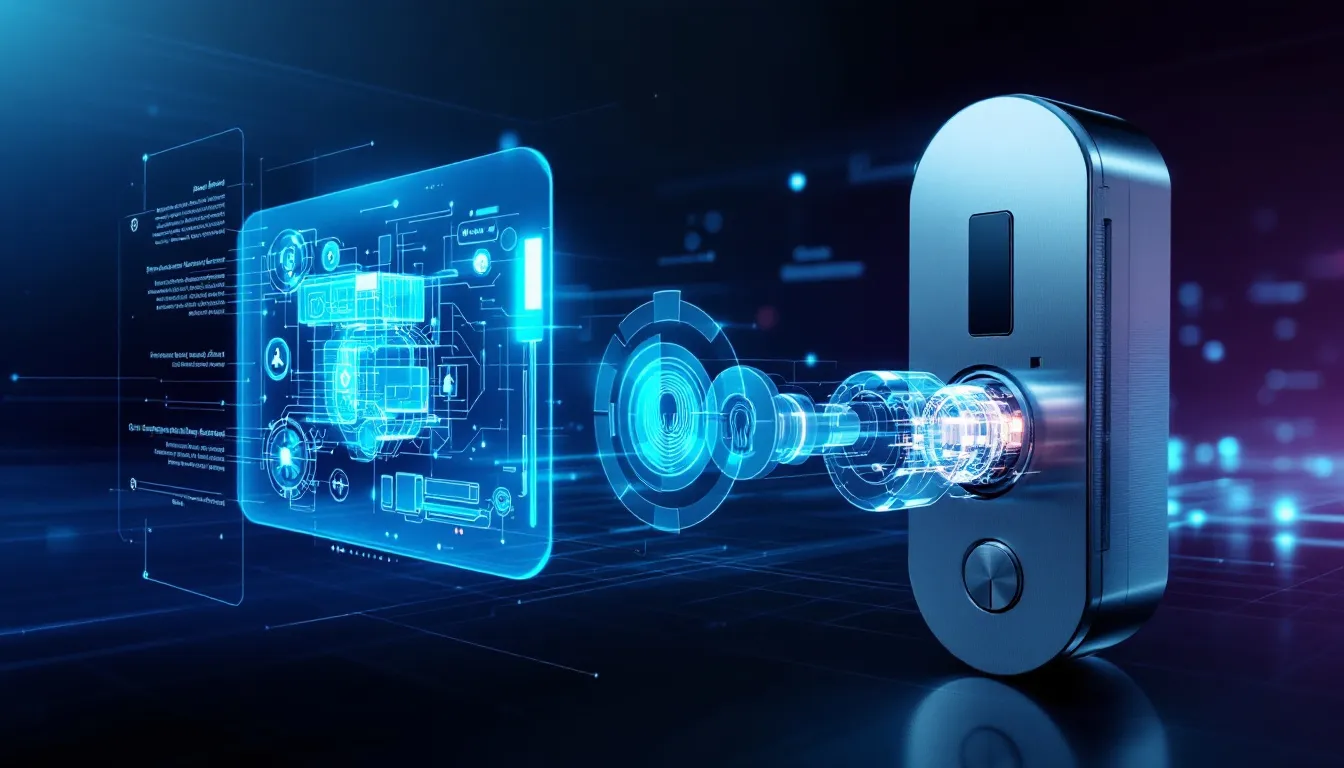
Electronic locks employ a blend of electronic components and access control techniques. In contrast to traditional locks that rely on the use of a physical key, these advanced systems confirm identities through options like keypad codes, biometric identification, or proximity cards. For example, someone may need to input a personal identification number (PIN) into a keypad or have their registered card detected by the lock from nearby in order to unlock it. Upon verification of proper credentials, the locking mechanism is released, which allows entry.
The process of electronic authentication bolsters security while offering enhanced control over who can enter an area. PINs can be modified with ease, card registrations updated accordingly, and even remote monitoring of who accesses what space is possible with these systems in place. Given their utility for overseeing entry permissions along with heightened safety provisions, they offer. Electronic locks serve as an effective option not just within homes but also across commercial settings, effectively addressing contemporary demands for secure access management solutions.
Types of Electronic Door Locks
Various forms of electronic door locks are available, tailored to satisfy unique security requirements and user inclinations. These key types include:
- Magnetic locks
- Electric strike locks
- Electric cylindrical locks
- Mortise locks
- Electric push bar locks
It is crucial to recognize the distinct characteristics and intended uses of each lock type due to their diverse features and benefits.
Following this, we will delve into the specifics of keypad locks, biometric locks, and proximity card door lock systems. We’ll explore their respective merits as well as situations where they prove most advantageous.
Keypad Locks
Touchpad-based keypad locks represent a widely used category of electronic locks that require a personal identification number (PIN) for entry. To gain access, users input their distinctive PIN code into the numerical keypad to unlock the door, thereby circumventing the requirement for traditional physical keys. The adoption of this keyless entry system provides enhanced security and convenience by permitting straightforward modification of PIN codes and streamlined access management without concern over misplaced keys.
Not only do these keypad locks facilitate user-friendly operation, but they also bolster security through provision for distinct access codes tailored to individual users. This feature proves particularly advantageous for commercial entities and residential settings with multiple residents, offering secure yet easily controllable admission privileges.
Biometric Locks
Utilizing unique biometric features, such as fingerprints, for verification purposes is the foundation of biometric locks. These systems grant door access exclusively to individuals whose biometric information has been pre-recorded, thus elevating security measures considerably. The uniqueness of an individual’s biometric data greatly diminishes the likelihood of unlawful entry.
Suited well for homes and businesses alike, these locks reinforce a robust barrier against intrusion by authenticating users through their distinct physiological characteristics. This method significantly bolsters security defenses by preventing unapproved entries.
RFID/NFC Smart Locks
Card locks use RFID technology to provide contactless access, offering both convenience and enhanced security. These locks operate by unlocking doors when a registered card is presented within a certain range, allowing for seamless access without the need for physical contact. This is particularly useful in commercial settings where ease of access and security are paramount.
RFID/NFC Smart Locks are highly convenient for managing access in environments with high user turnover. Administrators can easily control access by updating registered cards, making these locks perfect for offices, hotels, and other commercial properties.
Benefits of Using Electronic Locks
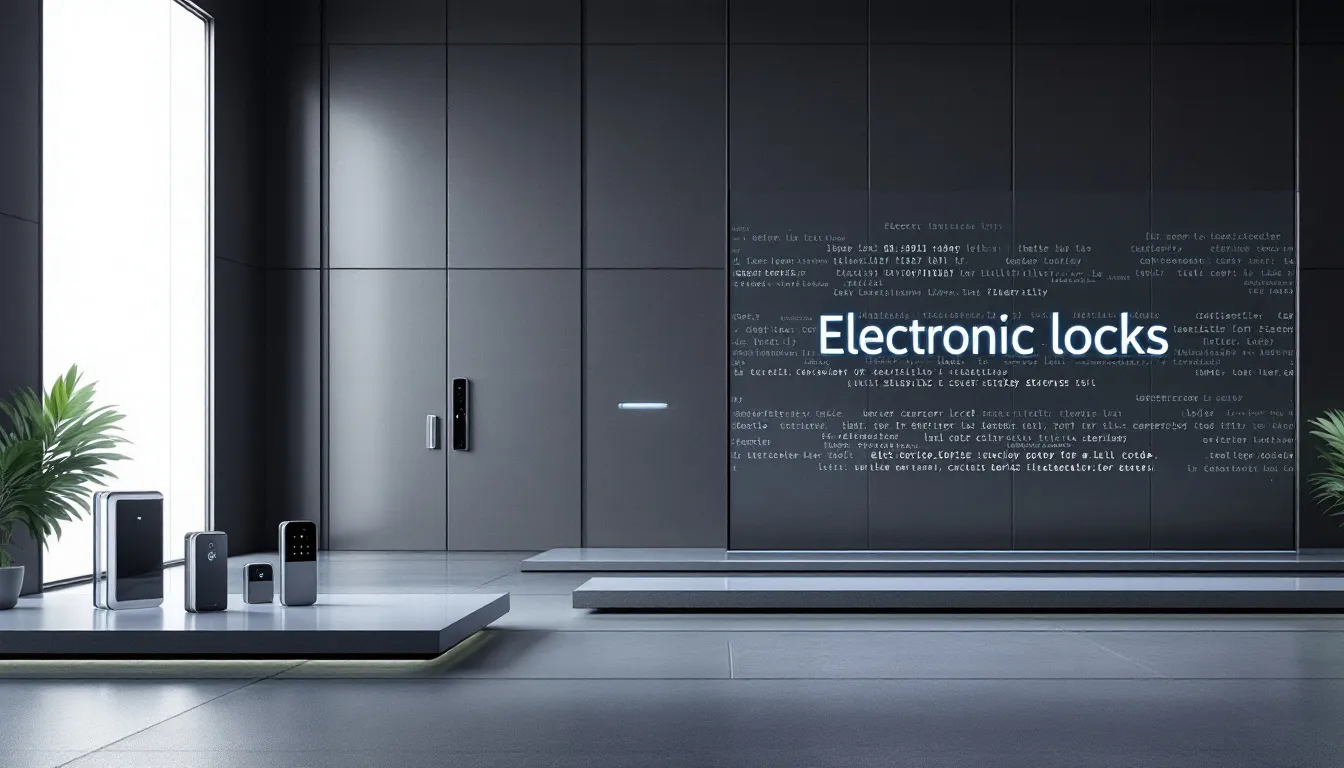
Electronic locks present a host of advantages that make them an appealing choice for improving both security and ease of access. Key benefits include the ability to enter without keys, incorporation of advanced security features, and effortless merging with smart home systems.
Subsequent sections will provide an in-depth look at how electronic locks can elevate your overall security infrastructure.
Enhanced Security Features
Electronic locks are renowned for their enhanced security attributes, including the implementation of encryption technology that raises the difficulty level for any potential compromise. They incorporate features like tamper detection and sophisticated access control mechanisms to bolster the integrity of the locking system. For example, several electronic door locks are equipped with alarm systems that activate in response to forced entry attempts, adding an extra safeguard.
These lock systems employ multi-factor authentication processes which demand verification via various methods – a strategy that markedly lowers the chances of unwarranted entry. The addition of auto-locking capabilities increases security by ensuring that doors automatically engage their multiple locking functions following specified actions or events—securing your premises even when you might neglect to manually execute all necessary locking procedures.
Keyless Entry Convenience
Electronic locks offer the benefit of keyless entry, eliminating the need to carry around physical keys and minimizing the chance that they might be misplaced or stolen. These advanced locking systems provide several methods for gaining entry without a key, including entering a PIN code, using biometric scans like fingerprints, employing key fobs, or accessing through smartphone applications—all designed for smooth and effortless admission.
The ability to lock and unlock doors remotely is another feature that boosts both convenience and security for users who can manage their lock settings from any location. This technology also includes options for issuing temporary codes that let owners grant limited access to visitors or workers without endangering their property’s safety. Automatic locking mechanisms guarantee that doors are consistently secure after being closed—a safeguard against unauthorized entries—and enhance user confidence by ensuring ongoing protection. These locks come equipped with remote access capabilities allowing superior management over the securing system.
Integration with Smart Home Systems
Modern electronic locks are increasingly designed to work with smart home systems, providing the ability for users to manage their lock mechanisms through a remote control or mobile devices such as smartphones and tablets. This means that doors can be secured or granted access from any location, which is particularly advantageous for individuals who are often on the move or have demanding schedules. When these electronic locks are connected within broader home automation frameworks and linked to a central smart home hub, products like the Mega Smart Lock become even more powerful.
Pairing electronic locks with other elements of a smart ecosystem—like security cameras and alarms—can craft an all-encompassing approach toward protecting one’s residence. By receiving instantaneous notifications about activities involving the lock system, homeowners gain immediate insights into their property’s safety status—a significant boost in managing and maintaining vigilance over their domains.
The incorporation of voice-controlled intelligent assistants such as Alexa and Google Assistant amplifies both functionality and user convenience offered by modern electronic locking systems. This symbiosis exemplifies how innovative technological integration can elevate everyday experiences within our living spaces.
Choosing the Right Electronic Lock
When choosing an appropriate electronic lock, it’s important to take into account your specific requirements, financial constraints, and personal tastes. Verify that the lock will fit your current doors and has the capacity for numerous users.
The following segments will offer comprehensive advice regarding these factors to consider.
Compatibility with Existing Doors
It is essential to confirm that an electronic lock is compatible with the doors you currently have. Evaluate the door’s composition and how thick it is—whether it’s made of wood, metal, or glass—to make sure the electronic lock can be properly fitted and will operate as intended.
You can ask the lock installers if you can’t confirm these information by yourself.
User Capacity and Access Options
When selecting an electronic lock, it’s crucial to consider the user capacity. Make certain that the lock supports multiple users and has sufficient of access codes. Such capability is especially beneficial for homes or businesses with many occupants as it permits personalized access control and bolsters security.
Backup Options
It is crucial to have alternative solutions in place for gaining entry during critical situations or when electronic malfunction occurs. Opt for locks that incorporate manual override capabilities, like key slots, which allow for the requisite access to open multiple locks if the electronic mechanisms cease to function.
Such alternatives prove extremely beneficial amidst electricity failures or technical glitches, guaranteeing that you always have the ability to enter your property where power supply systems are located without being locked out due to unforeseen circumstances.
Are Electronic Locks Worth the Investment?
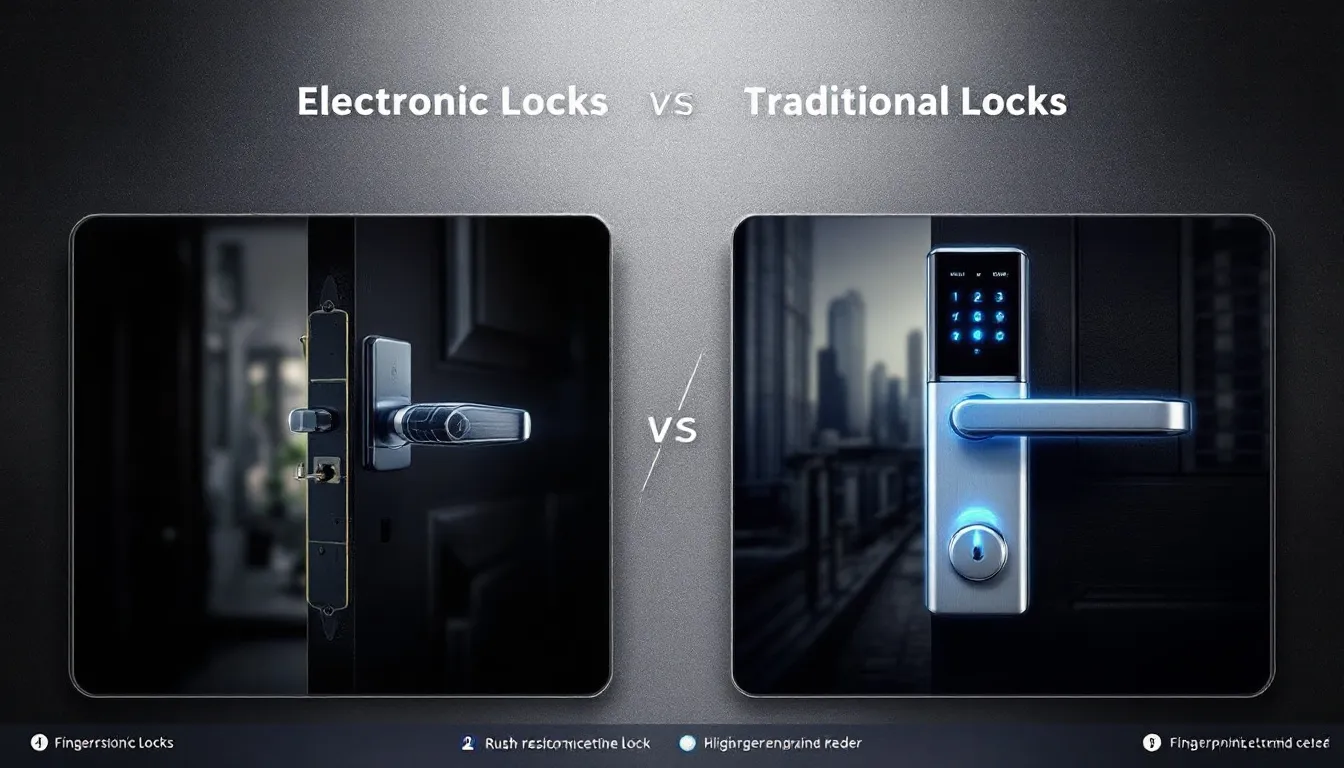
Upgrading to electronic locks can greatly enhance the level of security, offer greater convenience, and allow for seamless integration with contemporary technological advancements. Although they may come at a higher initial investment compared to traditional locks, the array of advanced features such as improved security measures often outweighs the cost over time. The capability for keyless entry, managing access remotely, and compatibility with smart home systems are among several benefits that underscore why electronic locks are worth considering.
When properly installed, these types of locks deliver safety on par with their conventional counterparts without being more susceptible to physical breaches. Their value becomes evident through both their cost-effectiveness and comprehensive security attributes, which render them an intelligent selection for those intending to advance their existing security arrangements.
Top Brands in Electronic Locks

Several top brands dominate the electronic lock market, offering innovative and reliable smart locking solutions.
August is renowned for its easy-to-install retrofit locks and seamless integration with smart home systems.
Yale, a long-established name in security, offers a range of smart locks featuring keypads, biometric access, and Wi-Fi connectivity.
Schlage combines strong build quality with advanced features like Z-Wave and Alexa integration. Kwikset is popular for its user-friendly designs and SmartKey technology.
Additionally, Samsung and Bosch offer high-tech options, particularly in biometric and touchscreen locks, making them favorites for modern homes and offices.
Summary
Electronic locks offer a modern and reliable way to secure your home or business. With features like keyless entry, smart home integration, and advanced security options, they provide both convenience and peace of mind. Understanding the different types of electronic locks and their benefits can help you choose the right solution for your needs.
As technology continues to evolve, upgrading to electronic locks is a smart move. It’s not just about improving security—it’s also about making everyday life easier and more comfortable. By staying up to date with modern security solutions, you’re taking a proactive step toward a safer future.
Frequently Asked Questions
What are electronic locks, and how do they differ from traditional locks?
Electronic locks are locking systems that use electrical components to control access, rather than relying solely on mechanical keys. Unlike traditional locks, which are manually operated with a physical key, electronic locks can be unlocked using methods like PIN codes, key cards, biometrics (such as fingerprints), Bluetooth, or smartphone apps. They often offer features such as remote access, user activity logs, temporary access codes, and integration with smart home systems. This makes them more convenient, customizable, and often more secure than traditional mechanical locks.
How do electronic locks operate?
Using electronic components and a range of authentication methods like keypads, biometrics, or proximity cards, electronic locks effectively manage access control. This modern approach to security offers an advanced substitute for conventional locks and locking mechanisms.
What are the main types of electronic door locks?
Deadbolt Smart Locks: Retrofit Deadbolt Locks: These replace only the interior part of your existing deadbolt, keeping the exterior keyway. Full Deadbolt Replacements: These completely replace your existing deadbolt with a new smart-enabled one.
Lever-Style Smart Locks: These replace the entire lockset and are commonly used for interior doors, especially in commercial or office settings.
Mortise Smart Locks: Integrated into a mortise (pocket) in the door, these locks combine the deadbolt and latch and are more secure and complex, often used in high-end or commercial buildings.
What are the benefits of using electronic locks?
Electronic locks provide superior modern security solutions with their ability to integrate into smart home systems, offering the convenience of keyless entry and improved security features.
Are electronic locks worth the investment?
Yes, electronic locks provide long-term value by enhancing security and convenience, making them a worthy investment for modern needs.

